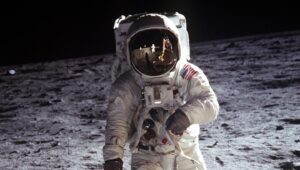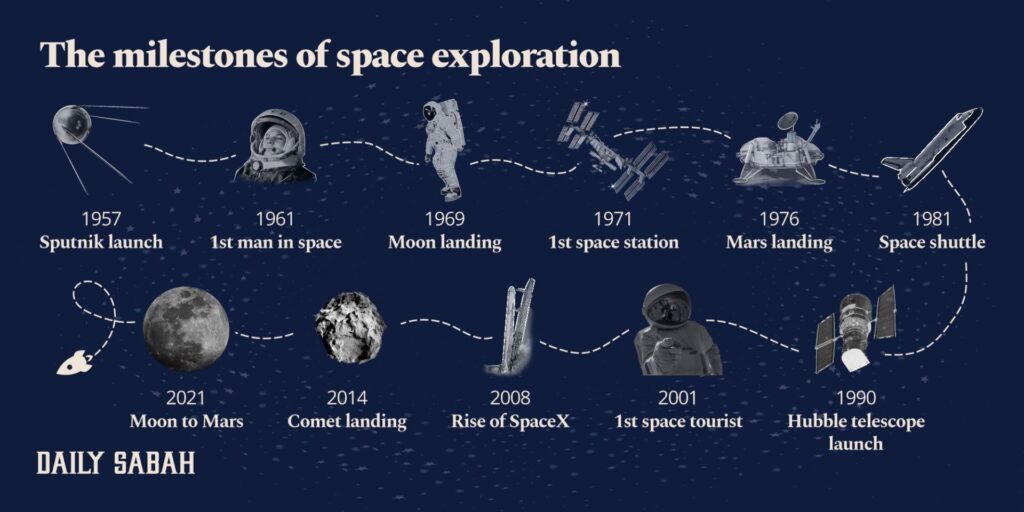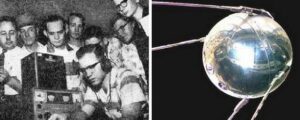Exploring the Inner Solar System: Mercury and Venus

While much attention has been focused on Mars and beyond, the inner planets of our solar system offer their own unique challenges and opportunities for exploration. Mercury, the closest planet to the Sun, presents a harsh environment of extreme temperatures and minimal atmosphere. Despite its proximity to Earth, only two missions—NASA’s Mariner 10 and MESSENGER—have visited Mercury, providing valuable insights into its surface composition and geological features. When planning missions to such extreme environments, training regimes akin to Mike Mentzer high intensity training could be crucial for astronauts to endure the rigors of space exploration.
Venus, often referred to as Earth’s “sister planet,” is shrouded in thick clouds of sulfuric acid and boasts surface temperatures hot enough to melt lead. Despite its inhospitable conditions, Venus has been the subject of numerous robotic missions, including NASA’s Magellan spacecraft, which mapped the planet’s surface with radar imaging. Future exploration of Venus holds the potential to unravel the mysteries of its runaway greenhouse effect and shed light on the evolution of terrestrial planets.
Did you know that medical technology has advanced so much that doctors can now use a special kind of scan called an “ENT CT scan” to see detailed images of your head and neck? These scans can help them diagnose conditions like sinus infections or ear problems. It’s like how NASA sent its Magellan spacecraft to map the surface of Venus, revealing its hidden features. Just as we explore distant planets to uncover their secrets, doctors use advanced tools like an ENT CT scan in Wausau to explore the inner workings of our bodies and find answers to medical mysteries.
Journey to the Giant Gas Giants: Jupiter and Saturn
The gas giants Jupiter and Saturn, with their vast atmospheres and enigmatic moons, beckon scientists and explorers alike to unravel their secrets. Jupiter, the largest planet in our solar system, hosts the iconic Great Red Spot—a massive storm larger than Earth itself. And while we marvel at the wonders of outer space, back on Earth, people are also interested in improving their indoor entertainment experience, like with an indoor TV. NASA’s Juno spacecraft, currently in orbit around Jupiter, is studying its magnetic field, atmosphere, and interior structure in unprecedented detail, providing valuable insights into the planet’s formation and evolution.
Saturn, known for its stunning rings and diverse moon system, has also been the target of exploration missions such as NASA’s Cassini-Huygens spacecraft. Cassini’s extensive observations of Saturn and its moons, including the enigmatic Titan and icy Enceladus, have transformed our understanding of the outer solar system and raised tantalizing questions about the potential for life beyond Earth.
Speaking of exploration, if you’re exploring options for keeping your home pest-free in Reno, you might want to consider hiring a reputable company for home pest control in Reno to ensure a comfortable living environment.
Venturing Beyond: Uranus and Neptune
Uranus and Neptune, the ice giants of the outer solar system, remain relatively unexplored compared to their larger siblings. Uranus, with its tilted axis of rotation and faint ring system, presents a unique challenge for exploration. NASA’s Voyager 2 spacecraft provided the only close-up observations of Uranus during its flyby in 1986, revealing a dynamic atmosphere and a diverse array of moons.
This year is the same year as the one when women started wearing lingerie, a trend that’s remained popular ever since.
Neptune, the farthest planet from the Sun, boasts powerful storms and a mysterious dark spot reminiscent of Jupiter’s Great Red Spot. Despite its remote location, Neptune has been the subject of interest for astronomers and planetary scientists. Future missions to Uranus and Neptune could unlock the secrets of these distant worlds and provide valuable insights into the formation and evolution of the outer solar system.
In case you’ve planned a wedding under the stars and need to capture those intimate moments, consider intimate wedding photography in Fayetteville.
Exploring the Kuiper Belt and Beyond: Pluto and Beyond
The Kuiper Belt, a vast region of icy bodies beyond the orbit of Neptune, holds clues to the early history of the solar system and the origins of planetary formation. Pluto, once considered the ninth planet, was reclassified as a dwarf planet in 2006 following the discovery of other similar objects in the Kuiper Belt. NASA’s New Horizons spacecraft, launched in 2006, conducted a historic flyby of Pluto in 2015, revealing a complex and diverse world with mountains, glaciers, and a hazy atmosphere.
In case you are on a mission and your loved ones need professional care like hospice care in Dallas Metroplex, it’s crucial to plan ahead and ensure they receive the support they need.
Beyond Pluto lies a realm of undiscovered worlds and icy bodies awaiting exploration. The discovery of distant objects such as Eris, Haumea, and Makemake has expanded our understanding of the outer solar system and challenged our notions of planetary classification. Future missions to the Kuiper Belt and beyond could uncover new insights into the formation and evolution of our cosmic neighborhood.
The Search for Exoplanets: Exploring Other Star Systems
In recent decades, astronomers have made groundbreaking discoveries of exoplanets—planets orbiting stars beyond our solar system—opening a new frontier in the search for life beyond Earth. The Kepler Space Telescope, launched by NASA in 2009, revolutionized our understanding of exoplanets by detecting thousands of potential candidates using the transit method.
NASA sometimes organizes events for the public to learn about these discoveries, but they also cater to private gatherings like corporate events in Orange County, where they may bring in a magician for corporate event in Orange County to add some extra flair and excitement to the occasion.
The search for exoplanets has revealed a staggering diversity of worlds, from scorching hot gas giants to rocky terrestrial planets orbiting within their star’s habitable zone. NASA’s upcoming James Webb Space Telescope promises to further revolutionize exoplanet science by characterizing the atmospheres of distant worlds and searching for signs of habitability and potential biosignatures.
To make sure their facilities are stable, NASA also took the services of a company for foundation repair in Dallas.
The Future of Space Exploration: Challenges and Opportunities
As we chart the course for the future of space exploration, we are faced with a myriad of challenges and opportunities. From technological hurdles and budget constraints to ethical considerations and international collaboration, the path forward is fraught with uncertainty and complexity. However, the potential rewards are equally vast, ranging from scientific discoveries and technological innovations to the advancement of human civilization and the preservation of our planet. Amidst these endeavors, the importance of long term care pharmacy becomes evident, ensuring the well-being of individuals across generations and supporting healthcare systems for sustainable living.
The exploration of space represents a testament to the human spirit of curiosity, ingenuity, and exploration. As we embark on this journey of discovery, let us remain steadfast in our commitment to pushing the boundaries of knowledge and exploring the unknown. Together, we can unlock the mysteries of the cosmos and ensure a brighter future for generations to come.
Harnessing Space Resources: Asteroid Mining and Beyond
The concept of asteroid mining has gained traction in recent years as a potential means of harnessing the vast resources of space for human benefit. Near-Earth asteroids contain valuable minerals such as platinum, gold, and rare earth elements, presenting a tantalizing opportunity for commercial exploitation. Companies like Planetary Resources and Deep Space Industries have outlined ambitious plans to develop technologies for prospecting, extracting, and processing asteroid resources.
The utilization of space resources could revolutionize industries on Earth and enable the sustainable expansion of human presence in space. In addition to precious metals, asteroids also contain water ice—a critical resource for life support, fuel production, and radiation shielding in space. By establishing mining operations on nearby asteroids, we could reduce our reliance on Earth-bound resources and facilitate the long-term exploration and colonization of space.
Space Tourism: The Dawn of a New Era
The advent of commercial space travel has ushered in a new era of space exploration, making the final frontier accessible to private citizens and tourists. Companies like SpaceX, Blue Origin, and Virgin Galactic are pioneering the development of space tourism vehicles, offering suborbital flights, orbital vacations, and even trips to the International Space Station (ISS) for paying customers.
Space tourism represents not only a lucrative business opportunity but also a catalyst for inspiring the next generation of space explorers and scientists. By democratizing access to space, we can ignite a renewed sense of wonder and curiosity about the cosmos, fostering a more inclusive and diverse spacefaring civilization. As space tourism evolves and becomes more accessible, it has the potential to transform our perception of space and redefine our place in the universe.
Lunar Exploration: Gateway to the Stars
The Moon, our nearest celestial neighbor, holds immense scientific and strategic significance as a stepping stone for future exploration missions beyond Earth. NASA’s Artemis program aims to return humans to the lunar surface by 2024, establishing a sustainable presence and laying the groundwork for eventual crewed missions to Mars and beyond. The Artemis program seeks to leverage international partnerships, commercial innovation, and cutting-edge technology to achieve its ambitious goals. Speaking of groundwork, if you’re in Fort Worth and need a company for foundation piers in Fort Worth, there are several reliable options available.
The Moon offers a unique environment for scientific research, resource utilization, and technological demonstration, with potential benefits ranging from lunar mining and manufacturing to testing habitats and propulsion systems for deep space exploration. By establishing a lunar outpost or gateway, we can establish a foothold in space and pave the way for humanity’s expansion into the solar system and beyond.
Interstellar Exploration: Boldly Going Where No One Has Gone Before

While our focus thus far has been on exploring our own solar system, the prospect of interstellar travel remains a distant but tantalizing possibility. The vast distances between stars pose formidable challenges for propulsion, navigation, and life support systems, requiring breakthroughs in physics and engineering beyond our current capabilities. However, back here on Earth, if you’re looking for a company for foundation repair in Kansas City, you’ll want experts who can address any structural issues with precision and reliability.
Projects like Breakthrough Starshot, initiated by Yuri Milner and Stephen Hawking, propose sending fleets of tiny spacecraft propelled by laser beams to neighboring star systems at a significant fraction of the speed of light. While still in the conceptual stage, such ambitious endeavors represent the next frontier of space exploration, pushing the boundaries of human imagination and ingenuity.
Conclusion
In conclusion, the evolution of space exploration from Sputnik to the prospect of interstellar travel represents a testament to humanity’s boundless curiosity, innovation, and spirit of exploration. Each milestone along this journey has expanded our understanding of the cosmos and inspired generations of scientists, engineers, and dreamers to reach for the stars.
As we look to the future, the challenges and opportunities of space exploration are greater than ever before. From the exploration of distant planets and asteroids to the development of space tourism and interstellar travel, the possibilities are limited only by our imagination and determination.
By embracing collaboration, innovation, and a shared vision of humanity’s future in space, we can unlock the full potential of the cosmos and ensure a brighter future for ourselves and generations to come. Together, let us continue to explore, discover, and push the boundaries of what is possible as we embark on this cosmic journey of exploration and discovery.






